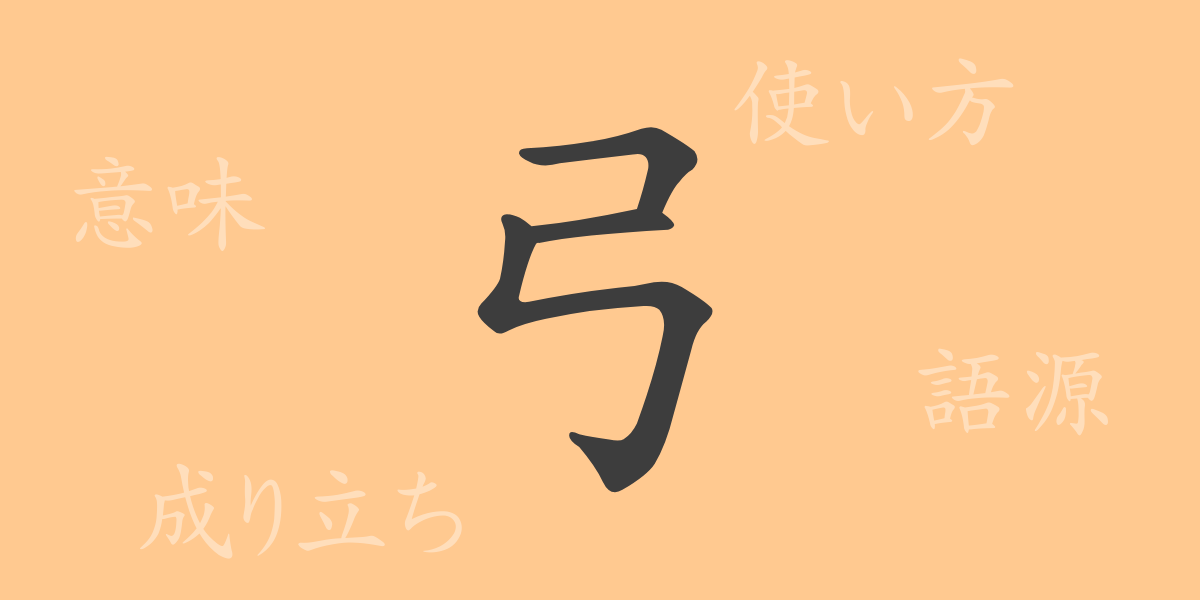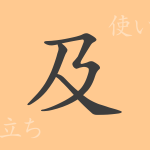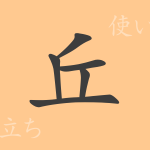The character “弓” (きゅう, kyuu) is deeply rooted in Japanese culture and language. This single character embodies a rich history and meaning that goes beyond just a weapon. In this article, we will delve into the common-use kanji “弓” (きゅう, kyuu), exploring its origins, meanings, uses, and its role in Japanese idioms and proverbs, uncovering its allure.
Origin of 弓 (語源)
The kanji “弓” (きゅう, kyuu) has been used as a weapon in hunting and warfare since ancient times. Its shape represents a curved piece of wood with a string, which is what a bow looks like. The origin of the word traces back to the old term “ゆぐ” (yugu), meaning “to bend.” Due to its varied uses, the character evolved to encompass multiple meanings.
Meaning and Usage of 弓 (きゅう, kyuu)
The kanji “弓” (きゅう, kyuu) typically refers to a bow in the context of archery. However, it can also describe anything with a curved shape. For instance, “弓形” (きゅうけい, kyuukei) refers to an arc shape, and “弓なり” (ゆみなり, yuminari) describes something that is curved.
Reading, Stroke Count, and Radical of 弓 (きゅう, kyuu)
Understanding the readings and structure of the kanji “弓” (きゅう, kyuu) is crucial for a deeper comprehension of the language.
- Reading: On-yomi (Chinese reading) is “キュウ” (kyuu); Kun-yomi (Japanese reading) is “ゆみ” (yumi).
- Stroke count: 3 strokes
- Radical: The radical is 弓部 (ゆみへん, yumi hen).
Idioms, Proverbs, and Expressions Using 弓 (きゅう, kyuu)
Japanese includes numerous idioms, proverbs, and expressions featuring the kanji “弓” (きゅう, kyuu). These are used in daily conversation, literature, and business settings, each carrying deep meanings and historical significance.
- 弓引き (ゆみひき, yumihiki) – Refers to an archer or the technique of drawing a bow.
- 弓なりになる (ゆみなりになる, yuminari ni naru) – Describes something that is bent or curved.
- 弓を引く (ゆみをひく, yumi o hiku) – Literally means to draw a bow; figuratively, it can mean to start something.
Summary on 弓 (きゅう, kyuu)
The kanji “弓” (きゅう, kyuu), despite its simple shape, encompasses a wealth of meanings. Its usage spans historical backgrounds and cultural values reflected in idioms and proverbs. Understanding common-use kanji like “弓” (きゅう, kyuu) is essential for comprehending Japanese. We hope this article has provided you with deeper knowledge and understanding.

























